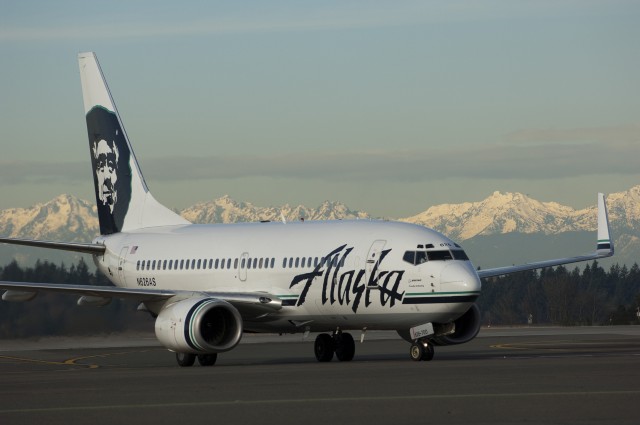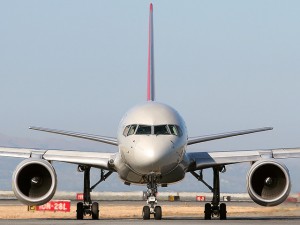
Alaska Airlines Boeing 737-700 at SeaTac Airport – Photo: Don Wilson | Port of Seattle
So, everybody and their brother has been writing about the recent announcement from Delta Air Lines that they’re further expanding their domestic flight schedule out of Seattle (SEA). There have been stories from mainstream media, miles/points bloggers, and (of course) industry watchers such as ourselves. Yet, we wanted to talk amongst ourselves and digest the information before weighing in.
Why is this a story? It’s because Alaska Airlines (AS), which is based out of Seattle, is supposed to be a partner airline with Delta. All three of the recently announced Delta routes are in direct competition with Alaska; actually 8 of Delta’s 13 domestic routes out of Seattle compete with Alaska.
As a guy who grew up in Washington State, and went to college at the University of Washington, I hold a special place in my heart for Alaska. An all-Boeing 737 operator, they have a loyal following in the Northwest. I just flew Alaska to and from Denver, and enjoyed their solid customer service, low-priced First Class upgrades, and great ground experience out of Seattle. (Although, as seems to be common from Denver, I got stuck on the Disneyland plane – am I the only one freaked out by flying on this bird?!).

Northwest Airlines Boeing 757
There has been a lot in the news about airline mergers and buy outs. Delta & Northwest, United & Continental and most recently AirTran & Southwest. Some in the media throw around “merger” and “takeover” interchangeably, but they are very different. When two airlines come together, there are two types of sale agreements: the merger and the takeover.
I got an email from a reader (thanks Jay) asking about the difference between an airline merger and take over. I am not a financial professional, but I want to try my best to point out the major differences. If you have any more to add, please feel free to leave a comment!
MERGER:
This is when two companies come together blending their assets, staff, facilities, and so on. After a merger, the original companies cease to exist, and a new company arises instead. Sometimes the new entity will take the name and brand from one of the airlines, but sometimes an entirely new brand can be created.
Delta and Northwest merged, leaving the Delta brand. United and Continental merged, which will leave the United brand. In mergers like these, management needs to work hard to come to certain agreements, figure what/who will be cut and how the new airline will operate. Of course, this can be a very complex process for both airlines to undertake.
TAKE OVER / BUY OUT / ACQUISITIONS
In a takeover, a company is purchased by another company. The purchasing company owns all of the target company’s assets including company aircraft, trademarks, routes and so forth. The original company may be entirely swallowed up, or may operate semi-independently under the umbrella of the acquiring company.
In the case of Southwest buying out AirTran, the AirTran brand will disappear and be absorbed by Southwest. It is not a merger and Southwest will own the assets of AirTran and have complete control. This process is easier than a merger, since management at Southwest has the final say, but they need to successfully share their culture with the employees at AirTran and make sure they feel welcome.
Alright, I hope that helps some!
Image: fiveholer

